Varicose veins in the legs and alternative medicine. Is there any effectiveness of such therapy, what methods and recipes are used to relieve the symptoms of the disease.
Modern medicine has "stepped" a long way forward and built great hopes for the quick and effective disposal of many diseases. However, even with impressive success, there are always people who prefer alternative therapies.
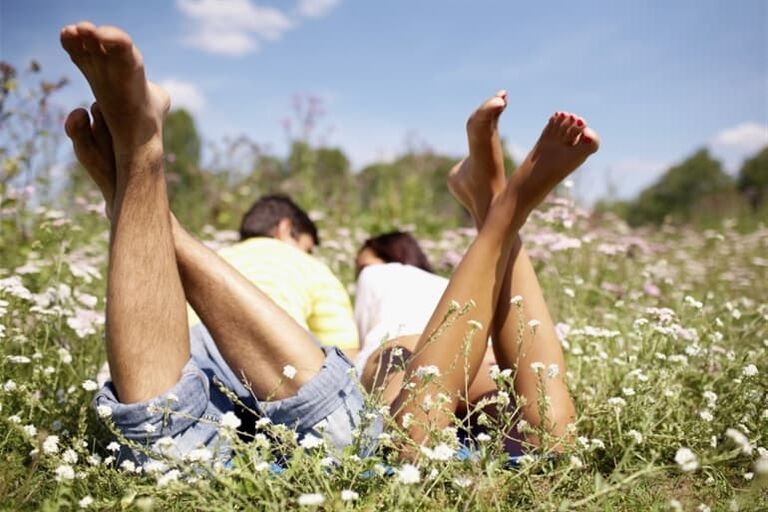
With varicose veins, such a moment is mainly associated with the reluctance to "go under the knife. "It is understandable, the long recovery period, the possibility of complications and the risk of recurrence of the disease - all this is mixed in the patient's head, which, as a result, leads todelay in visiting the doctor and self-treatment.
It should be noted immediately that this approach is initially doomed to failure, as the lack of medical treatment only worsens the clinical severity. To date, there are safe, painless procedures for surgical treatment, as well as conservative therapy methods.
Alternative medicine is also very effective, but only in combination with the right treatment. What are the dangers of varicose veins in the legs, the treatment of which, with an unreasonable approach, can cause complications.
We treat varicose veins with natural ingredients: effective medicinal plants
Alternative methods to treat varicose veins are particularly effective in the early stages of the disease's progression or during the recovery period after surgery. Also, such therapy can be used in more advanced situations to provide symptom relief.
With the correct preparation and use of folk recipes, the following positive effects are provided:
- good anti-inflammatory effect;
- leg swelling and pain in the affected area decreases;
- blood circulation is normalized, venous blood stagnation is eliminated;
- blood walls become more elastic and elastic;
- heaviness in the legs disappears;
- spider veins, as well as dilated veins that bulge on the skin, become smaller;
- decreased vascular permeability;
- immunity is strengthened;
- the course of the disease is greatly simplified and thus the risk of complications can be prevented.
Plant extracts are useful in many diseases. Extracts are widely used in pharmaceuticals, as they have several valuable elements.
Some homeopathic ointments, gels, tinctures, etc. , which is prepared at the factory, is in no way ahead of the healing properties of homemade folk remedies, so why pay more if you can prepare the medicine yourself.
So, to simplify the choice of plants in this case, let's conditionally divide them into 4 groups:
- Antiplatelet agents or otherwise blood thinners:
- fern;
- raspberries and strawberry leaves;
- sage brush;
- chamomile;
- butterbur;
- fibers;
- spiraea;
- chamomile;
- compresses;
- peony root.
- Pain relief:
- geraniums;
- clover;
- birch buds;
- sweet clover;
- licorice;
- celandine;
- corydalis;
- willow bark;
- ginger;
- elmous meadowsweet.
- Improves blood circulation:
- Agarwood;
- acacia;
- licorice;
- purple leaves;
- wise;
- lemon color;
- thigh.
- Strengthens blood vessels:
- birch buds;
- valerian;
- chestnuts;
- hawthorn;
- marsh cinquefoil;
- cudweed;
- dill.
The most popular remedies for varicose veins on the legs:
- horse chestnut;
- wood lice;
- cabbage;
- sage brush;
- kalanchoe;
- white willow bark;
- celandine.
Attention:many patients are in no hurry to go to a specialist, but this is wrong. At the appointment, the doctor will be able to assess the severity of the condition, prescribe a diagnosis and treatment. He will also advise on the possibility of using folk methods in certain situations, because an integrated approach to treatment is to be ahead of the enemy by at least two steps.

horse chestnut in the fight against disease
Horse chestnut has an anti-inflammatory effect, increases the strength of capillaries and reduces their permeability. Eliminates edema by removing excess water from the body. Helps relieve pressure on the veins and thus relieves leg fatigue and pain.
Instructions for preparing horse chestnut tincture are as follows:
- You need to take 50 g of the inflorescence of the plant and pour it with 1 liter of alcohol or vodka.
- After two weeks of infusion and shaking daily, use 1 teaspoon. 3 times a day before meals.
- The course of therapy is a week, after which a break is made for 5 days, and then the chestnut therapy is repeated.
- Store the finished product in a cool place.
Also, this medicine can be used to rub the painful area every day.

Cabbage leaves - the enemy will not be noticed
What diseases are not afraid of cabbage leaves?
Yes, almost none, because it is a universal medicine in the fight against many pathologies. The popularity of such a product is due to its many medicinal properties, which are due to the vitamins and trace elements contained in cabbage leaves.
This efficiency is expressed in the following properties:
- bacteria;
- wound healing;
- regenerate;
- recovery;
- anti-sclerotic;
- tonic;
- anti-inflammatory;
- painkillers;
- diuretic.
Such drugs for varicose veins on the legs are usually used in the form of compresses. To do this, you need to roll a little or beat a cabbage leaf, grease one side with vegetable oil and attach it to the inflamed vein.
Then fix the sheet with a bandage and walk with such a compressor all day. The course of treatment is 1 month.
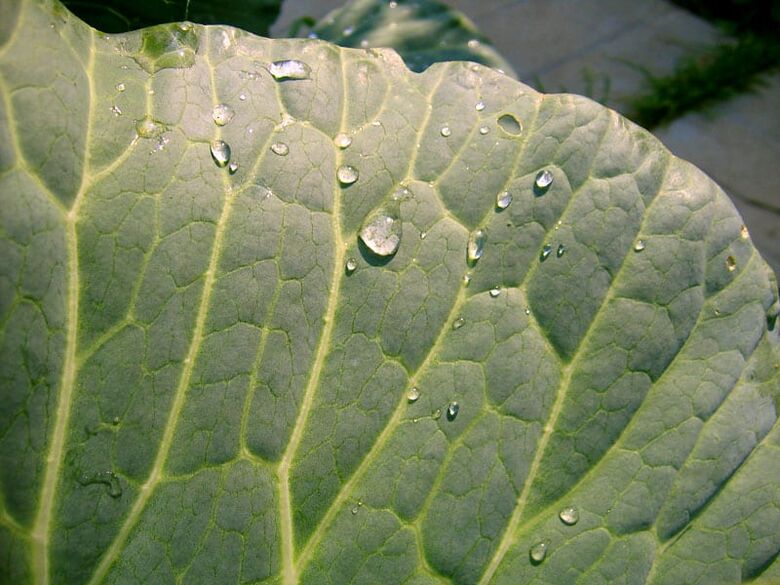
Apple cider vinegar: effective medicine or myth?
A popular folk remedy for VRV is apple cider vinegar. The effectiveness of this tool is due to the following useful features:
skin tone increases; blood circulation improves; blood vessels are strengthened, the walls become elastic; reduce swelling and pain in the legs.
This is due to the composition of the product, which contains more than 20 useful trace elements, vitamins and minerals.
The use of apple cider vinegar is carried out according to the following recipe:
- Dissolve 1 tsp. starch with 1 tbsp. l. clean water and drink this medicine in the morning on an empty stomach 30 minutes before meals.
- Mix 1 cup of apple cider vinegar with 1 liter of water, and then rinse your feet with the solution. After that, you need to let the skin dry naturally.
- Soak a cotton pad in the essence and rub the product into the problem area.
- Make a healing bandage. It is necessary to moisten a piece of gauze or cloth in an acetic solution, attach it to the inflamed vein, wrap it with polyethylene and wrap it with a blanket on top. Do it in the morning and evening, the duration of the procedure is from 20 to 40 minutes.
The price of such a tool is not expensive, but it is better if you prepare natural products at home.

Recipes for natural ointments
Preparing homemade foot ointment is as easy as tearing a pear, the main thing is to follow all the recommendations. They differ from their "brothers" in the preparation of the industry in their 100% originality, budget, efficiency and ease of use.
To make such a medicine at home, you only need to keep the necessary ingredients and a little patience.
Preparation of homemade ointment:
Herbal ointment |
|
All herbs are mixed and filled with fat. Then the container is placed on a slow fire for 3 hours. After that, the ointment is filtered and poured into a jar with a lid. Application is done in the form of applying medicine on a piece of gauze and applying it to the diseased area. The procedure is carried out 5 times, after which a break is made for two weeks. |
Olive oil based |
|
Mix the resin, wax and oil in a metal container and let the mixture boil in a water bath. Cooking time - 1 hour. Then put the honey in the container and leave it for 10 minutes, then add the propolis and also boil it for another 10 minutes. This is the final stage, at the end of which the ointment is placed in a glass container and cooled. |
Garlic ointment |
|
Garlic is crushed and mixed with butter in a 2: 1 ratio. |
Based on lard |
All ingredients must be taken 1 tablespoon. l. |
Mix all the ingredients and put on a slow fire, let it boil. As soon as the first bubbles appear, indicating a heating of about 100 ° C, you need to remove the container with the medicine from the stove, put it in a container for future storage and cool. |
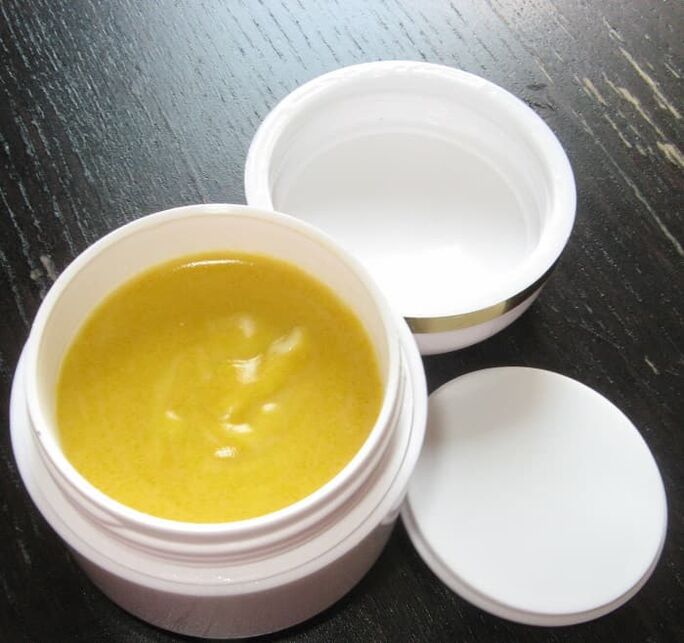
Compress and rub
Treatment of varicose veins on the legs with folk remedies can also be done with the help of compresses or rubbing. The effectiveness of this method is associated with a local effect on the skin, where nutrients penetrate directly to the pathological focus.
In practice at home, the following recipes can be used:
- Compressed tomatoes. Setting up this method is quite simple. You need to take a tomato, finely chop it, apply it on a bandage, and then attach it to the painful area. For a stable fixation, you can also tie a piece of gauze or other elastic bandage. The duration of the procedure is 2 hours, the number of daily repetitions is 3 times, the possibility of using the method is every day.
- Take a clean burdock or horseradish leaf and place it on a hot kettle until the optimum temperature is obtained (can withstand heat). The inside is applied to the affected vein, and the first piece of sterile dressing is placed on the skin. All this is fixed safely. The procedure is best done at night and carried out daily. The course of treatment is 5 times.
- Apply honey to the cloth in an even layer, apply a compress to the sore leg, wrap it with plastic wrap on top, and then with a scarf. The duration of the first procedure is 2 hours, the second and third at least 4 hours, and the fourth is done all night.
- Compressed from willow branches. First you need to take a twig, rinse it well and break it into small pieces. Then, using a bandage or gauze, attach it to the damaged area and keep the compress for several hours.
- Buy ordinary cosmetic clay and dilute it with cold water until a liquid consistency is obtained (it should resemble sour cream). Apply to all affected parts of the foot, wrap with a wide bandage or clean gauze, then apply another layer of clay, then a layer of gauze, etc. in this sequence until you get a "clay boot" 1. 5 cm thick. Wrap it all in canvas to absorb moisture, and top it with a woolen scarf. At the final stage, you need to lie down for 3 hours in such a position that the legs are in an elevated position. After this time, the compress is removed, and the feet are washed thoroughly. After the second such procedure, you can see a visible effect in the form of absorption of nodes and elimination of pain.
Rubbing is also very useful in diseases:
- Colored Kalanchoe will help perfectly with a feeling of heaviness and burning in the legs. For this, pure plants and vodka (alcohol can be used) are taken in a ratio of 1: 1. After letting the medicine brew for 10-14 days, rub the legs until the vein pattern disappears completely.
- Walnut colored. Prepared from green walnuts (previously crushed) in combination with olive oil. Homemade medicine is aged in the sun for 40 days, and then the problem area is lubricated with it.
- Pour violet leaves with 1 bottle of vodka and put the solution for 2 weeks. Then use it to rub for a month and a half.
Also, for scrubbing, you can use the fruits of the rare maclura tree, which grows in the southern regions. Internal use is strictly prohibited, as the juice is poisonous, but for external use in the form of alcohol tincture, crushed fruits will be very useful.
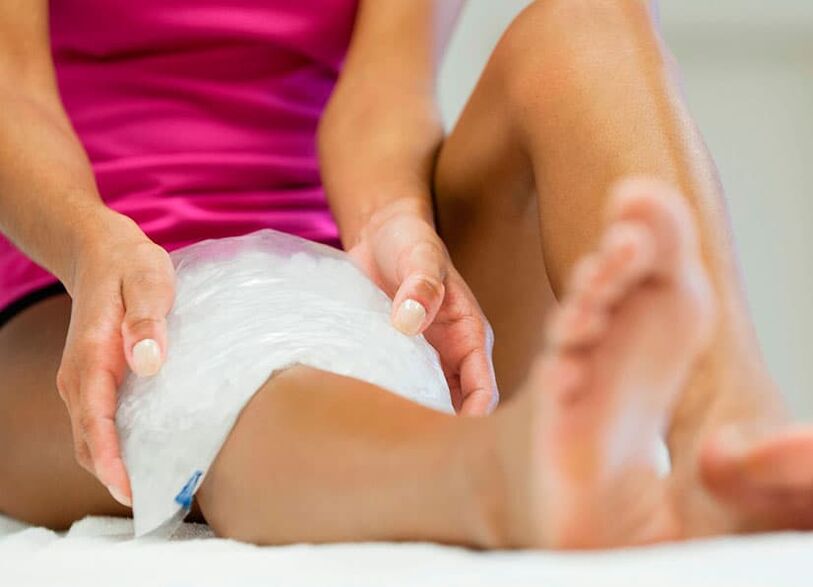
Types of folk remedies for internal use
This type of treatment most often involves the preparation of medicinal tinctures and decoctions.
At home, you can experiment with the following alternative medicine recipes:
- For cooking, you need crushed dried flowers or chestnuts, yarrow, chamomile flowers, raspberry root in equal proportions. From the finished collection you need to take 2 tbsp. l. and pour them with 600 ml of boiling water, put it on a low heat and let it boil, then immediately remove it from the stove. After insisting the solution overnight, take ¾ cup daily in the morning and evening.
- Garlic colored. Grind 4 heads of garlic and 4 unpeeled lemons with a meat grinder or blender. The resulting mass must be transferred to a 3-liter glass jar and pour the mixture with warm boiled water. Add the medicine for three days at room temperature, occasionally stirring the contents of the jar. After this time, strain the solution into another container and store it on the bottom shelf of the refrigerator. You need to take 100 ml 3 times a day during or after meals. A full course of treatment involves the preparation of four colored jars of the medicine.
- Prepare a collection of crushed dry leaves dioecious nettle, marshmallow root, yarrow, St. wort flowers. Mix 1 tbsp. l. mix in 1 liter of boiling water and strain until the solution cools completely. Then strain the broth and take half a glass 3-4 times a day after meals. The course of treatment is 2-3 weeks, after which the body is given a rest for 14 days, then the treatment is repeated.
Attention:many folk remedies may be contraindicated due to the individual characteristics of the organism, so if there is an allergic reaction to any of the components that are part of the recipe, the use of this method should be abandoned.
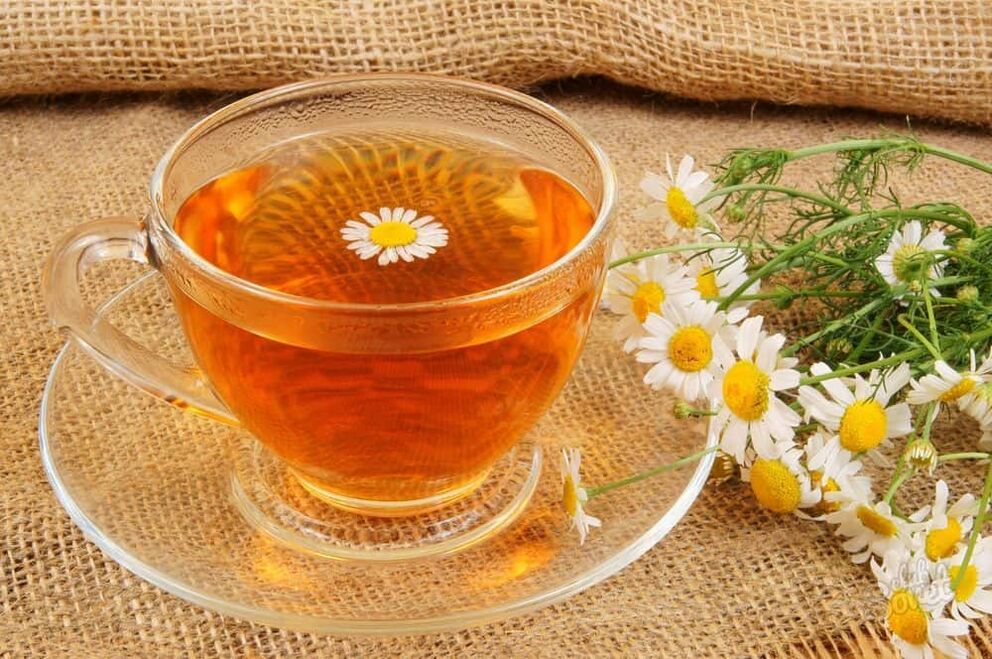
Bathing as a way to relieve symptoms
After a tiring day, it's time to relax and a therapeutic bath will be very useful. As a reduction of the symptoms of the disease, you can use folk recipes such as for varicose veins on the legs:
- Take 500 g of chestnut, oak and willow branches, put them in an enamel container and pour cold water. Bring to a boil and wait another half hour, then add 200 g of marshwort, St. John's wort, replacement and chamomile. This solution should be infused overnight. Before bathing, steam rye bread and pour the broth into the bathtub along with the medicinal solution that was prepared earlier. The procedure is done every day before going to bed for 30-40 minutes. The water temperature should be 38-43 °C.
- Prepare a decoction for bathing from 2 handfuls of willow bark, filled with 5 liters of boiling water. Next, the solution languished on low heat for another half hour, and then poured into the bathtub. Hygiene measures should be carried out in the same way.
It is better to combine folk recipes for varicose veins with daily walks, proper nutrition, therapeutic exercises and wearing the right clothes. In this case, the effectiveness of not only non-traditional, but also drug therapy will increase.
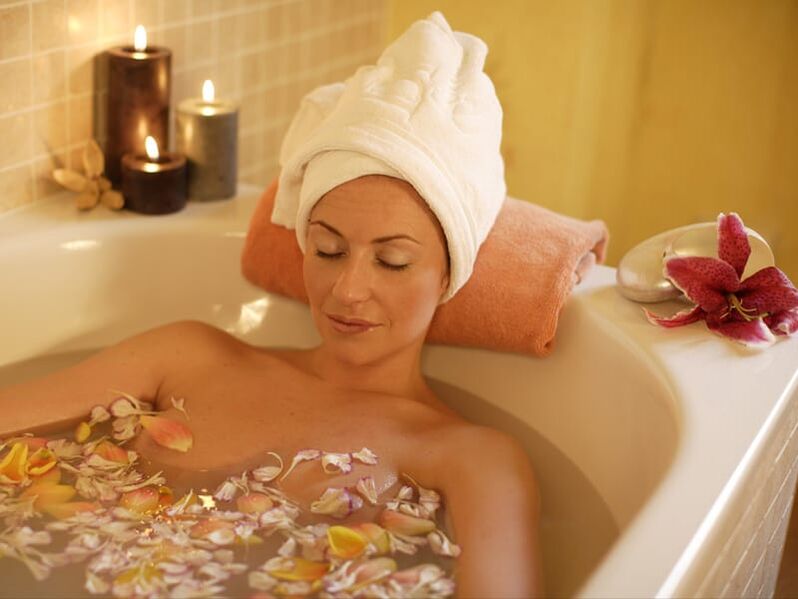
natural drink
Freshly squeezed juice is useful not only for the treatment of varicose veins, but also for many other diseases and disorders. They perfectly enrich the body with nutrients that strengthen blood vessels, reduce the risk of blood clots and increase the body's defenses.
For this purpose, you can prepare a popular juice mixture:
Carrots and spinach |
10: 6 |
Carrots contain bioflavonoids, which help reduce vascular fragility and strengthen blood walls. Spinach is rich in oxalic acid, which cleans the blood and prevents the formation of harmful deposits on the walls. Daily use of this juice fills the body with vitamins, removes excess water, toxins and toxins, stimulates the lipolysis process and has a complex beneficial effect on the cardiovascular system. |
Carrots, celery sticks, spinach leaves, parsley leaves |
7: 4: 3: 2 |
Parsley strengthens vascular walls and protects blood vessels from damage and thinning. Celery helps in removing excess water and other harmful substances. The preparation of such a mixture will help clean the channels of calcium salts, strengthen them and reduce the risk of atherosclerosis. |
Carrots, spinach, beets |
10: 3: 3 |
When drinking juice, there are positive effects such as:
|
Spinach leaves, vegetables and radish roots, watercress |
4: 2: 2 |
When consuming a healthy drink, the balance of electrolytes is leveled and the metabolism in the tissues is enhanced. The risk of hypertension and other vascular complications is reduced. This combination is an excellent choice for thinning the blood and dissolving blood clots that have already formed. |
Attention:prepare and take juice every day in the amount of 500 ml. Storage is allowed no more than half an hour, because most of the useful components can be lost when in contact with air.
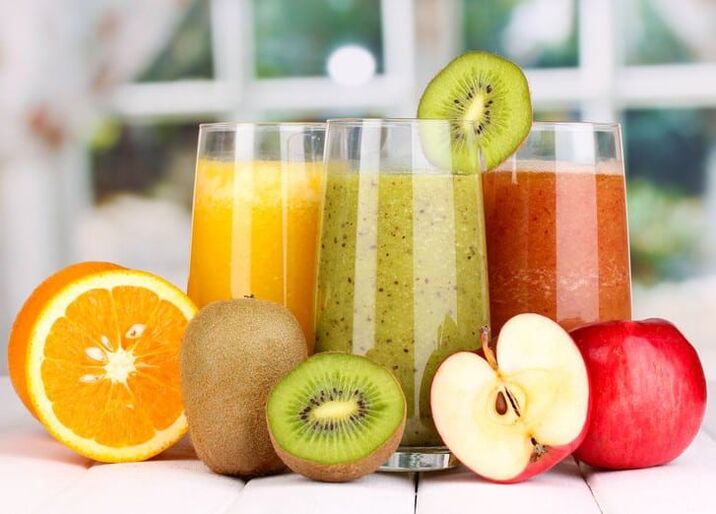
Knowing how to cure varicose veins in the legs with folk remedies, you can significantly reduce your condition and prevent the symptoms and severity of the disease from worsening. However, be careful of side effects and if any warning signs appear in the form of itching, burning, abdominal pain, etc. , contact your doctor immediately.

















